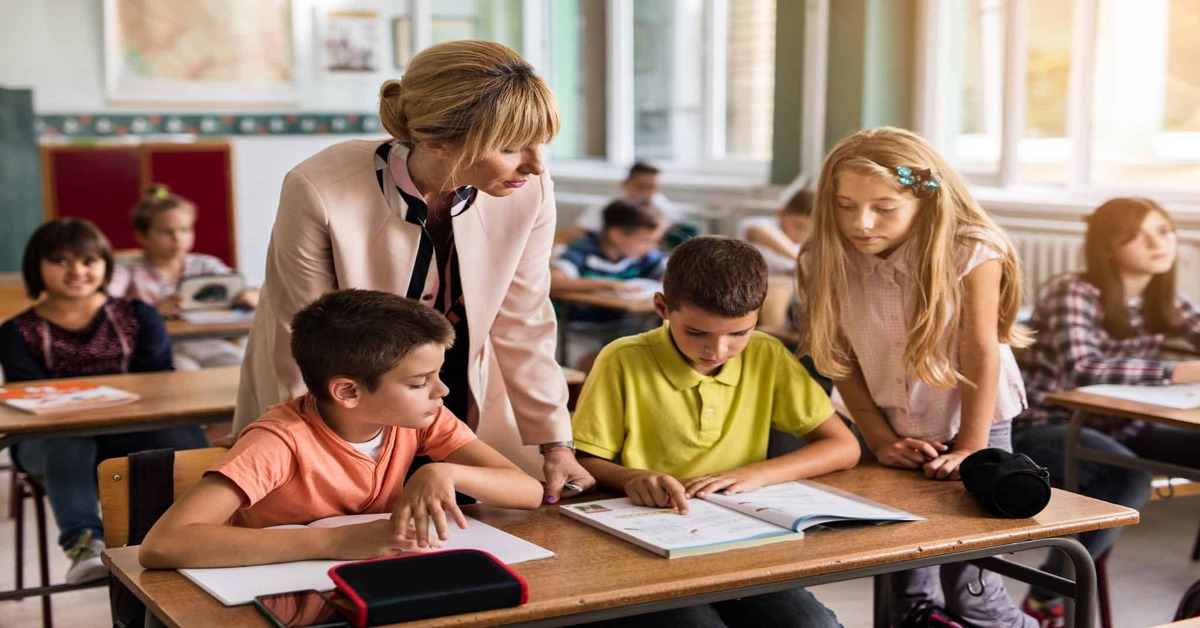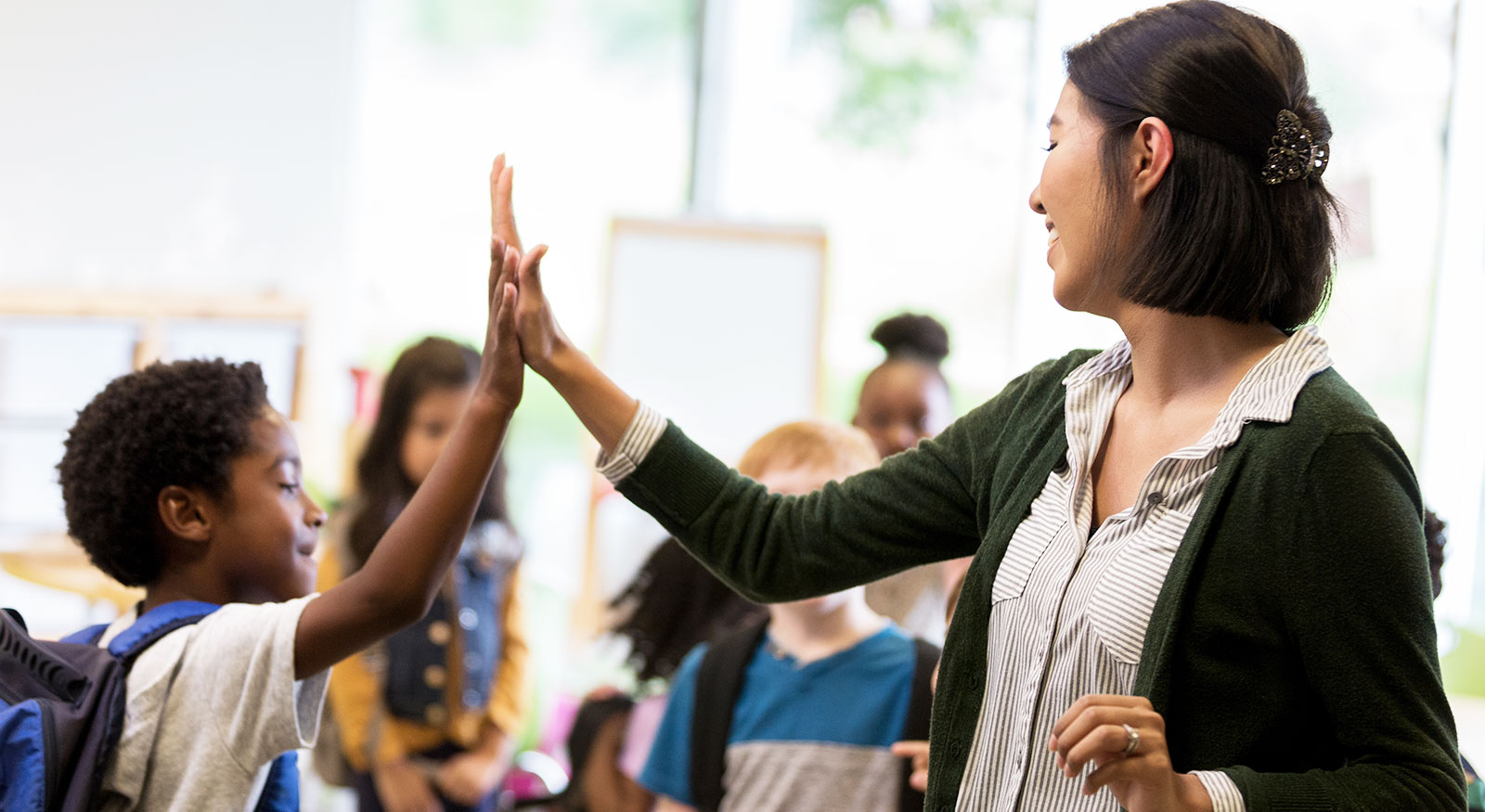
The relationship between students and teachers: How to nurture and grow?
This article delves into the significance of the relationship between students and teachers. We’ll explore the key elements that contribute to its strength, from open communication and mutual respect to unwavering support and engaging instruction. We’ll also provide practical strategies for educators and parents to cultivate a positive and enriching classroom environment where both students and teachers can thrive.

Why evaluating the relationship between students and teachers is crucial?
Improved Learning Environment:
- Stronger Engagement: A positive relationship fosters a sense of trust and respect, leading to greater student engagement in class activities and a willingness to take risks.
- Open Communication: Students feel comfortable asking questions, seeking clarification, and expressing their ideas freely, leading to a more dynamic and effective learning environment.
- Enhanced Motivation: Feeling supported and valued by their teachers motivates students to exert more effort, persevere through challenges, and strive for academic success.
Positive Student Development:
- Socio-Emotional Well-being: Strong student-teacher relationships contribute to a positive school climate, where students feel safe, supported, and valued. This fosters a sense of belonging and self-worth, crucial for overall well-being.
- Improved Social Skills: Positive interactions with teachers model healthy communication and social skills. Students learn conflict resolution, empathy, and respect for others.
- Increased Confidence: Feeling supported by teachers builds student confidence in their abilities. They are more likely to believe in themselves and take on new challenges.
Benefits for Teachers:
- Job Satisfaction: Positive relationships with students can make teaching more rewarding and enjoyable. Teachers feel their efforts are appreciated, leading to increased job satisfaction and motivation.
- Effective Instruction: Strong relationships allow teachers to tailor their instruction to individual student needs and provide targeted support. This leads to more effective learning outcomes.
- Improved Classroom Management: When students respect their teacher, classroom management becomes more effortless. Teachers can focus on instruction rather than discipline issues.
Overall School Success:
- Positive School Climate: Strong student-teacher relationships contribute to a positive school environment where everyone feels safe and respected. This leads to improved school culture and overall student success.
- Reduced Absenteeism: Students with positive relationships with teachers are more likely to enjoy school and attend regularly.
- Parental Involvement: Strong student-teacher relationships encourage open communication with parents, fostering a collaborative approach to student success.
How to evaluate the relationship between students and teachers?

Here are some ways to evaluate the relationship between students and teachers:
Formal Methods to evaluate the relationship between students and teachers:
- Surveys: Develop anonymous surveys for both students and teachers. These surveys can ask questions about communication, respect, support, classroom environment, and overall satisfaction with the relationship.
- Focus Groups: Conduct focus groups with students and teachers to gather more in-depth qualitative data. This allows for open discussions about experiences, challenges, and areas for improvement.
- Classroom Observations: Trained observers can assess the classroom environment and interactions between students and teachers. They can look for signs of respect, collaboration, active learning, and positive communication.
- Performance Reviews: Teacher performance reviews can incorporate a section on student relationships. This might involve student feedback or observations by administrators focused on teacher-student interactions.
Informal Methods to evaluate the relationship between students and teachers:
- Student-Teacher Conferences: Schedule regular individual meetings between students and teachers. This allows for open communication about academic progress, challenges, and overall well-being.
- Exit Tickets: Provide students with short, anonymous exit tickets at the end of class. These can ask questions about the lesson, the teacher’s explanation, and how comfortable students felt asking questions.
- Anecdotal Evidence: Teachers and students can share anecdotal evidence of positive interactions, such as students seeking help outside of class or teachers going the extra mile to support a student.
- Parent-Teacher Communication: Open communication between parents and teachers can provide insights into the student-teacher relationship. Parents can share their observations about their child’s attitude towards school and the teacher.
See also:
Vietnamese Teacher’s Day: Origin and Gifts Recommendation
Schools Link – Academic Coordinator (Secondary & High School Sector)
Key areas deserve consideration when evaluating the relationship between students and teachers
:max_bytes(150000):strip_icc()/168653606-58ac96cf3df78c345b728c65.jpg)
When evaluating the relationship between students and teachers, several key areas deserve consideration. Here’s a breakdown of these crucial aspects:
Communication:
- Clarity and Respect: Is communication clear, concise, and respectful from both teacher and students? Can students understand instructions and express themselves freely? Is there a two-way flow of ideas and information?
- Comfort Level: Do students feel comfortable asking questions, seeking clarification, and expressing their opinions without fear of judgment or ridicule?
- Active Listening: Do both teachers and students listen attentively to each other, demonstrating genuine interest in what the other has to say?
Respect:
- Mutual Respect: Is there an atmosphere of mutual respect in the classroom? Do students feel valued and heard by their teacher? Does the teacher show respect for students’ ideas and perspectives, even when they differ?
- Fairness: Do all students feel treated fairly by the teacher? Are expectations and rules consistently applied?
- Positive Reinforcement: Does the teacher focus on positive reinforcement rather than relying solely on criticism?
Support:
- Academic Support: Does the teacher provide adequate academic support to students who are struggling? Are there opportunities for individualized help and differentiated instruction?
- Emotional Support: Do students feel their teacher cares about them as individuals and their well-being beyond academics? Is there a safe space for students to express concerns or difficulties?
- Social-Emotional Learning: Does the teacher integrate social-emotional learning (SEL) strategies to help students develop healthy coping mechanisms, communication skills, and positive relationships?
Engagement:
- Active Participation: Are students actively engaged in learning activities and discussions? Do they take initiative, ask questions, and contribute to the classroom environment?
- Motivation: Are students motivated and enthusiastic about learning? Do they find the lessons stimulating and relevant to their interests?
- Differentiation: Does the teacher utilize differentiated instruction to cater to different learning styles and abilities, ensuring all students are challenged and engaged?
Expectations:
- Clarity: Are expectations around behavior, academic performance, and classroom participation clear and well-communicated to students?
- Fairness: Are expectations fair and achievable for all students?
- Collaboration: Are students involved in setting some classroom expectations, fostering a sense of ownership and accountability?
By evaluating these key areas, educators can gain insights into the quality of the relationship between students and teachers within their classrooms. Strong relationships built on effective communication, mutual respect, support, engagement, and clear expectations are essential for a positive learning environment, improved student outcomes, and overall school success.
